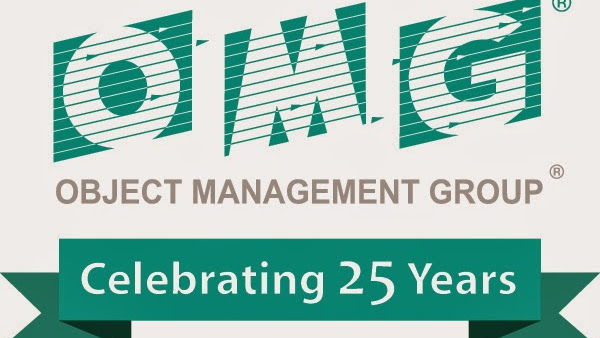Ed Willink , the driving force behind the standard AND implementation tasks for the OCL language has just announced the availability of OCL 2.4. According to Ed:
The OCL 2.4 specification has now been formally adopted and is available from http://www.omg.org/spec/OCL/2.4/.
The revision contains the easy maintenance changes that can be done now prior to the move to a model-defined specification for OCL 2.5. The more significant fixes are outlined below. All changes can be seen in the change-barred version of the specification.
The implicit to set conversion has been clarified as a shorthand for the new library operation OclAny::oclAsSet(), which has OclVoid and OclInvalid overloads. Use of “->” on a non-Collection therefore always converts to a Set of the source. The Set is empty for a null source, and invalid for an invalid source.
=() and <>() are clarified to compare DataTypes by value and Classes by object identity. true is now always equal to true and 1 is now always equal to 1.0.
The spelling of oclInState/oclIsInState is resolved to be oclIsInState.
String::indexOf() now considers an empty String to be a substring of any String.
The logical operations involving null no longer violate idempotency. not null is therefore null.
The conflict between ‘all operations are strict’ but ‘some operations are non-strict’ is resolved by explicitly defining all OclVoid and OclInvalid overloads.
The non-strict behavior of ‘and’ and ‘or’ has been explicitly carried over into ‘forall’ and ‘exists’ which are defined in terms of ‘and’ and ‘or’.
Ambiguity in Collection::any() has been removed to require an invalid return in the absence of a match.
A reverse CollectionRange such as 1..0 is now defined to be invalid; previously the well-formedness rule looped forever. Oops; it was realized too late that the Sequence{1..x->size()} idiom requires a reverse CollectionRange to be empty. Issue 18985 raised; hopefully fixed in OCL 2.5.
FNR Pearl Chair. Head of the Software Engineering RDI Unit at LIST. Affiliate Professor at University of Luxembourg. More about me.




And, no surprise, a new RFP (Request for Proposal) for OCL 2.5 is already well ahead in the approval process of OMG (see: http://www.omg.org/members/cgi-bin/doc?ad/14-03-01 ).
It will be presented and discussed next Wednesday March 26, 2014 at the ADTF session during the OMG Technical Meeting.
the OCL 2.5 RFP issued at the PTC Plenary last Friday with the document number ad/2014-03-05 is now available at
http://www.omg.org/cgi-bin/doc?ad/2014-03-05